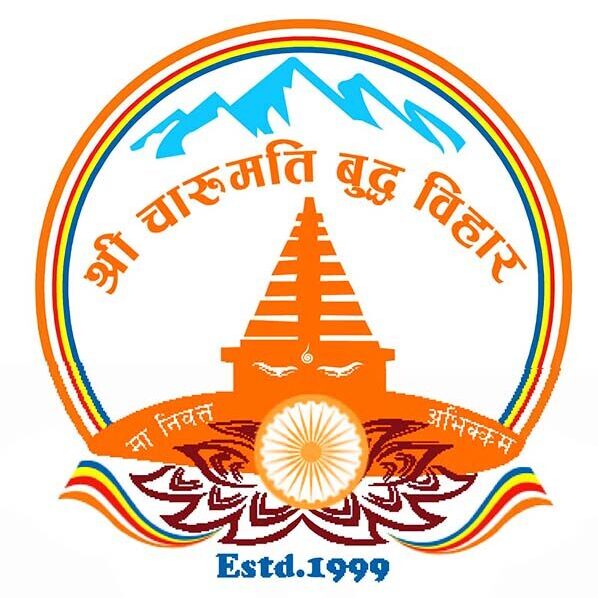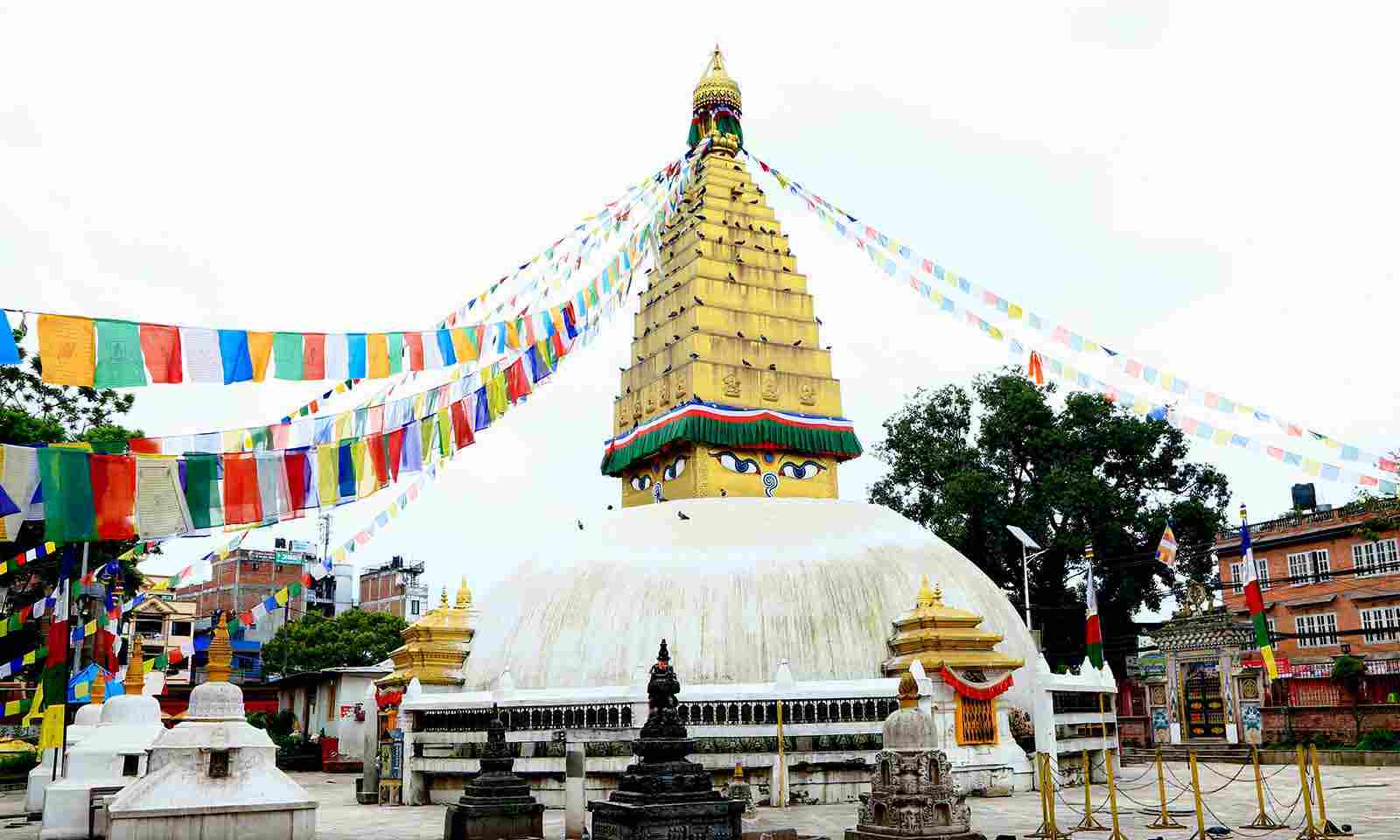Sri Charumati Buddha Vihar & Charumati Stupa History
Sri Charumati Buddha Vihar & Charumati Stupa History
The dignified Charumati Stupa, built in Devpatan (present Chabahil) before 2,300 years, is Souvenir of Buddhist missionary to Nepal. This mission has strengthened and deepen the roots of Buddhism in Nepal since the period. It was built by princess Charumati, daughter of Emperor Ashoka, who was married to the king Devpala of Devpatan as part of Buddhist missionary. She helped to spread Buddhist teaching and way of life to the community and lived rest of her as a nun in a monastery near this stupa after her husband died. She built the stupa to pay homage to Lord Buddha. The Archive indicates that it is an ancient archeology of Nepal related to Buddhism and is among the oldest stupas of the valley.
The historical monument has gone through several repairs, reconstructions and renovation in the past to reach its current state. In 2000 AD, this monument observed a severe crack which could crumble down the whole stupa anytime. The chief of Charumati Buddhist Mission-Nepal, Venable Tapassi Dhamma initiated the renovation with the help of Buddhist communities from all parts of the world for which he expresses his deepest gratitude. Although he was given permission by the government under the assistance of Department of Archeology, the government did not realized its significance as to take the full responsibility of its reconstruction and preservation. This ignorance of Government has saddened us deeply and compelled us to seek the assistance from citizen of the world. Buddhism flourished in Nepal from its rune or SakyamuniBUddha’s enlightenment. It spread even more after Emperor Ashoka’s visit to sakyamuni’s birthplace in Lumbini which is marked by the Ashoka pillar that he erected in Lumbani. The pillar is inscribed withglory of Loard Buddha and his birthplace.
Emperor Ashoka had also visited Kathmandu Valley and made 100 Big and small stupa build around the valley during 3td century BC. Which are called Ashoka She. (also, Ashoka chaitya) out of which a number prevail while others have been damaged or destroyed in the course of history’s various events. Emperor Ashoka’s Buddhist missionary was accompanied by one his daughter Princess Charumati, who married King Devpala of Devpatan (presently known as chabil in Kathmandu) and lived in Nepal practicing and popularizing Buddhism. She was highly influenced by her father’s Buddhist mission and was motivated to take it as he duty to spread Buddhism in the kingdom. After her husband’s death, she renounced royal life and convened into Buddhist nun and started living in a vihara along with 500 other women who went into the refuge of Buddhism. She practiced and preached dhamma from that. Her vihar was known as Chansmati Vihara and the name of that area became, habahil, rtearkm, = Chamma, lah C vihar, meaning ‘residence of Charumati in local Newari language, Chammati’s contribution in P.N.., Thera.. …sr,. ancient Kathmandu valley is worth-mentioning. Charumati built a stupa near her vihara enshrining the holy rekc of the Buddha inside it, to pay homage to Lout umpa both by Chaffinati is call. Charumati Sturm.



Before and after Renovation
The historical Charumati Stupa has been found to have undergone repairs, reconstructions and renovations in the past centuries by the contemporary rulers. But a long way had passed before it was renovated in the year 2000 with the active initiation and participation of Charumati Buddhist Mission Nepal and Bhikkhu Tapassi Dhamma. A few years before 2000, the upper part of the stupa started cracking. The weather and also the constant vibration from vehicles moving on the adjoining main road, the crack started to become wider and severe. This threatened the safety of the Stupa, it could crumble into ruins anytime.
Realizing the urgent requirement to protect the living history of Buddhism in Kathmandu, Chief Abbot Ven. Bhikkhu Tapassi Dhamma initiated renovation of this stupa. He visited offices of local authority concerned departm.ts of Nepal Government, discussed the matters with local people, gathered a dedicated team inclusive of all tne concerned authorities and general public, and was set to start the historical renovation. Department of Archeology (Dok), Local authonfies, local Buddhist organiZations, local as well as international devotees, and well-wishers by his side, the grand mission of Stupa renovation was completed in 2001, presenting a pleasant relief to the devotees and the communities who take pride on this historical asset.
During the renovation process, many ancient relks of historical significance were found, such as ancient coins, gold Buddhist idols, and metal idols of Buddha kept by the devotees during each renovation in the past as well as ancient brick with inscriptions of “CharumatiThupa” in Brahmi script of Emperor Ashoka’s period and the inscription of Dharrnachakkara that was used to represent Buddhism by Emperor Ashoka. The brick which was the proof of the the ancient history of Charumati Stupa is safely kept in the Museum at Chhauni, Kathmandu. Other ancient relics were put back in the Stupa’s foundation during the reconstruction. The records of these relics are safe with Charumati Buddhist Mission Nepal.
The prernises of Charumati Stupa is us. for conducting any programs and gatherings of Charumati Buddha Vihara which stands at the western front of t Jhe Stupa. The stupa is now a pilgrimage to many Buddhist followers from far and wide. The local governrnent is also giving attention to the preservation of this historical, cultural a. archeological heritage. Bhikkhu Tapassi Dhamma, who persistently and tirelessly worked to bring the Stupa back to its magnificent state from dilapidated condition, continues promoting the Stupa and bringing into public attention the glorious history associated with Charumati through Charumati Buddha Vihara and Charumati Buddhist Mission Nepal.
Sri Charumati Stupa
Sri Charumati Buddha Vihar in Chabahil – 7, Kathmandu, Nepal.


